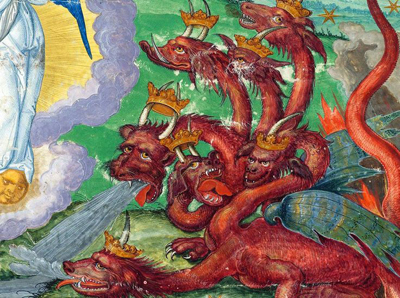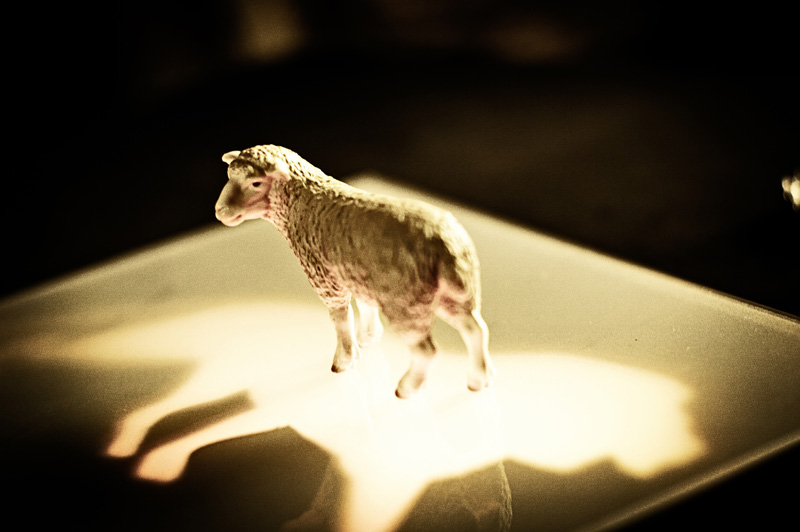Why Revelation - Week 1
When Paul Patterson, the teacher/pastor at Watershed, decided to lead us on a study of this strange book back in January, 2015, many of us did not respond with the same enthusiasm he had. Revelation seemed to be like the tabloids, a book many had turned into a sensationalist roadmap for the end of the world.
And the violence! One scene has blood up to a horse’s eyeballs flowing down a street for two hundred miles! With seven headed beasts, red dragons, images of cataclysmic destruction, reading the entire book through in preparation for our first class did little to assuage our reservations.
Besides the skewed reading of the violence, Revelation has also been misused as a crystal ball over the centuries, in a (failed) attempt to predict the end of the world. Christians supposedly get suctioned up to heaven in a strange event called the “rapture”.
So, why should we read the book of Revelation?
As you can see from the title of this blog series, Revelation began to be rescued for us despite our deep reservations. Rescued from a crystal ball understanding. Rescued from being puzzling and irrelevant to being a profound, practical book. As we took a deeper look, our misconceptions began to dispel.
The important proviso as we set out was that it be properly explained, and we had a good teacher for the journey ahead. Through an online video series put on by The Great Courses®, Craig Koester quickly became a teacher we could trust. He too had enthusiasm, enough to make it a major focus of his life’s studies. He was engaging, clear and like any good teacher, in love with his subject matter. His lecture became the diving board into greater depths.
When we were about half-way through the course, we reflected on what had helped to change our minds. What images, thoughts or themes helped deepen the book or make it more understandable? Maybe some of our thoughts will help as you begin this journey with us.
Keep Turning the Page
Early in our course, Craig Koester gave some advice which would provide one of the keys to rescuing this book.
“If you’re disturbed by what you’re reading,
keep turning the page.”
This simple phrase was good advice. Many people never get beyond the sensationalism. They read ominous scenes of horrific monsters and stop, skipping over the hopeful ones without a second glance.
But if you keep reading, you’ll see a pattern. Every time the visions seem to take us to the brink of disaster, there is a new scene rich with promise and possibility on the next page. Koester reminded us to keep going in order to understand the deeper meaning behind the violent imagery. Like a Magic Eye picture, depth emerges when you know how to see the pattern.
This phrase became a shorthand prompt for us, reminding us that violence and destruction don't have the last word. Even when we think things are going down the tube, God remains with God’s people until the end. Things get turned on their heads in ways we can’t imagine on our own steam, despite the suffering of the moment. Maybe, just maybe, the misinterpreted, tabloid version of Revelation out in dominant culture isn’t what was meant.
About All That Violence
Like a vivid dream, Revelation is chock full of word pictures, many of them violent. They are powerful and confusing at the same time. The word pictures were communicating historical events of the time, but not in a literal way, and if you take them literally now, you miss the point entirely. The language of Revelation is the language of Apocalyptic literature, and when we let the images work together to impact our hearts, they can change and motivate us to move in a different direction. This is much more profound than what you could say in a literal way.
For example, there is an

Apocalyptic language was used by Jewish revolutionaries especially in the first century, and it expressed the feelings of people oppressed and crushed by the brutal nation states. These people needed hope in the midst of what felt like the absolute abandonment by God. Walk into any Alcoholics Anonymous meeting today, and it’d sound much the same!
We began to see the images as though they were from a superhero comic book, where insane, deranged figures dominate the pages and crazy exaggeration is the name of the game. People make statues to the tyrannical monster from the sea or a crazed woman is holding a cup containing the blood of the people she’s killed.
Revelation is often called the literature of the oppressed, and when oppressed people start to feel crushed beyond their limits to endure, they begin to feel violent. This type of writing, with its superheroes and villains, reached out to a people who were either persecuted by or tempted to acquiesce to the powers of the dominant empire of the day.
For those in our community who did not want to read the ludicrous images from Revelation, understanding the nature of Apocalyptic language helped us be patient enough to look beneath the images to try to understand what they meant to the original readers and what they could possibly mean for us.
Lamb Power
One theme quickly became the central guiding image and key to the whole book. Early in Revelation (chapter 5), there are seven sealed scrolls, and John is wondering who was worthy to open them. It’s a character issue. Who has the personality qualities needed to open the scroll that holds the secret about God’s power, about God’s rule, and about how God overcomes evil?
And in this pivotal scene, which

Paradoxically, this ultimate image of weakness is the most powerful symbol of all. People knew that this slain lamb referred to Jesus Christ, who lovingly took a bullet for us, who ruled through sacrificing his life rather than domination, who didn’t just die but came back to life. Though it looked like he was losing, in the end He triumphed over evil. In their similar circumstances, this lamb was showing them the way. This lamb who showed love through self-sacrifice and not violence, is the ultimate warrior. This lamb has the character of God.
In our first study night, the world was reeling from the shocking news from Paris, where 11 people had been murdered who had worked for the satirical weekly newspaper Charlie Hebdo, which used cartoons to mock Catholicism, Judaism, Islam and various other groups. It struck us that situations like this echoed Revelation, where disenfranchised people became roaring lions, inflicting violence and doing evil to other people. Unlike the slain lamb, these people thought they could win the battle for truth through violence. They were really laboring under a false interpretation of things.
The Christ of Revelation is not a warrior lion who devours people and rules by force. He’s a warrior more like a Lamb who gives its life for others. This Messiah is relentless in His willingness to lay down His life for others. In today’s world, where responding to violence usually means more violence (think of America’s response to 9/11 for example), it’s an upside down image.
The image of the slain lamb became central for us, and is reflected by the photo at the top of this page. Our community started to use a code for it — “Lamb Power”. Lamb power exists when we live not with our own ego or power, but with the same sacrificial love as Christ. When we suffer under a false interpretation of things, just as the first century Christians did, we need to look for deeper ways of seeing.
Because Revelation is so difficult to interpret, “Lamb Power” becomes a cipher or code to understand the bizarre imagery. It is shorthand for the truth that “victory lies in weakness”. If we keep remembering this central image, we can “keep turning the pages” as Koester reminded us, even when the images are wild and we have no clue what’s going on. Revelation is a call for us to believe that the way of Jesus trumps the power of the empire.
We hope you can join us in our online study, and that Revelation will be rescued for you as well. Our goal is to distill our 24 week study into 10 blogposts which will begin to unpack this book for you. At the side of this page, you’ll find many helpful resources if you want to dive deeper.
Each blogpost will also have questions for engagement at the end. Please jump in and answer one or more in the comments section, or comment on any other thoughts stirred up by the content. Our community will grab a cup of coffee and join you online.
Questions for Engagement — Week 1
- Why do you want to study Revelation?
- How have you understood Revelation in the past?
- In what ways is self-sacrifice difficult in our culture?
- Fighting back in a violent way seems appealing at first. Can you think of a person in a movie, the news, or in your life who sacrificed something for the greater good?
- If God doesn’t engage in violence on his enemies, how should we treat ours? Why is this so difficult?
In case you’d like to read more…
“How Do I Read the book of Revelation?” — This is a very helpful short interview with Craig Koester introducing the book of Revelation, plus a 20 minute audio interview.
In this 5 minute video clip, Craig Koester talks about some of the difficulties and opportunities of understanding Revelation.
And don't forget about our Additional Resources page in the sidebar which references books, videos and podcasts.
Next Post
